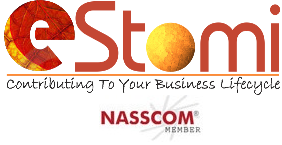As I read the funny quote, “Growing old is mandatory, growing up is optional”, I couldn’t stop thinking about how ITSM (IT Service Management) market segment has evolved. It started as a tool to log or track issues and then gradually grew as Helpdesk (both Incident & Problem Management) only to accommodate Change, CMDB, Asset, Knowledge and Service Request Management tools later.
For years, this traditional solution sufficed, as many of the customers’ ITSM maturity level was not very great. My experience tells me that many of the early customers implemented ITSM just because someone they knew in IT suggested and (convinced even without understanding the requirements?) that it is a great tool. The standard ITSM was implemented by respective tool vendors/consultants and the customers were expected to use the tool depending on available features.
Even today, we have lot of product vendors offering ITSM solutions using the standard features that they have been developing and working right from version 1.0. Undoubtedly, they have introduced many new features; however, how many of them are “really” useful or leveraged by the customers? We predominantly find many customers face 2 types of fundamental challenges – defining Service Management requirements (note that I am not referring it as IT Service Management requirements) and using the solution effectively/efficiently post implementation. Most of them tend to just use the features offered by the ITSM products that they may have bought. I strongly believe that many customers still lack defining the Service Management requirements and envisaging tons of benefits that they would get otherwise. A few of the customers do not seem to be inclined to understand best practices or how the solutions can be implemented more effectively. Some customers, in order to save cost, tend to keep postponing implementing solutions only to find later that the delay causes them more costs. Indeed, they will define certain criteria, inputs and what they would expect post implementation; however, I think many critical information/details that the customers can derive and get benefited are left out, not discussed or perhaps not thought of either.
Some customers who were slightly better educated in ITSM or ITIL, came up with few critical data like measuring SLAs (Service Level Agreements), performance of support desk, ensured that customer details are available for support desk agents, linking the incident tickets with appropriate assets etc. They presumed that providing inputs and getting data about the above parameters would suffice to get the benefits post ITSM implementation. Well, this was ok when ITSM tool was in its infancy stage and when other tools like Change Management or CMDB were getting added as a part of ITSM suite. Not anymore.
Long live such traditional ITSM that does not offer value addition other than standard features that are available in most of the ITSM tools!
Today, the customers do not tend to buy just because you are selling ITSM solutions. They tend to understand if the solutions are worth the cost as several ITSM tools/products are available in the market. Most of the ITSM tools provide standard features and reports; hence the customers tend to explore what other benefits they can derive. They are trying to explore if they can find the losses they are making due to issues reported more than planned. They would like to know whether they need to spend their budget on training or make changes in the teams or approve leaves of support desk agents depending on the projected tickets etc. As you can note, merely managing services in IT (fundamental goal of ITSM) does not suffice. The tool now needs to be reasonably configurable and customizable AND domain agnostic, to be leveraged across industries – indeed, yet keeping the costs reasonable.
Sounds complicated or impossible? Should you not be able to find losses or ROI using the same tool rather than additional investment since it is in fact measuring the work done in the organization? Now, you are reading attentively, huh? I know what would be your next question – “Mr. (so called) expert, do you guys have such mechanisms/value additions to provide what other traditional ITSM tools aren’t offering?” The answer is “Yes!”
You may have to reach out to us to know why our response is a resounding “Yes” and why we are convinced that traditional ITSM is dead. The new Service (and Support) Management is the sure shot way to know how your organization is doing and can benefit significantly by its usage. Our team has worked hard to be “The choice” for our customers, rather than being a “Hobson’s choice”

I read your post and wihsed I was good enough to write it
Thank you, Marilee 🙂